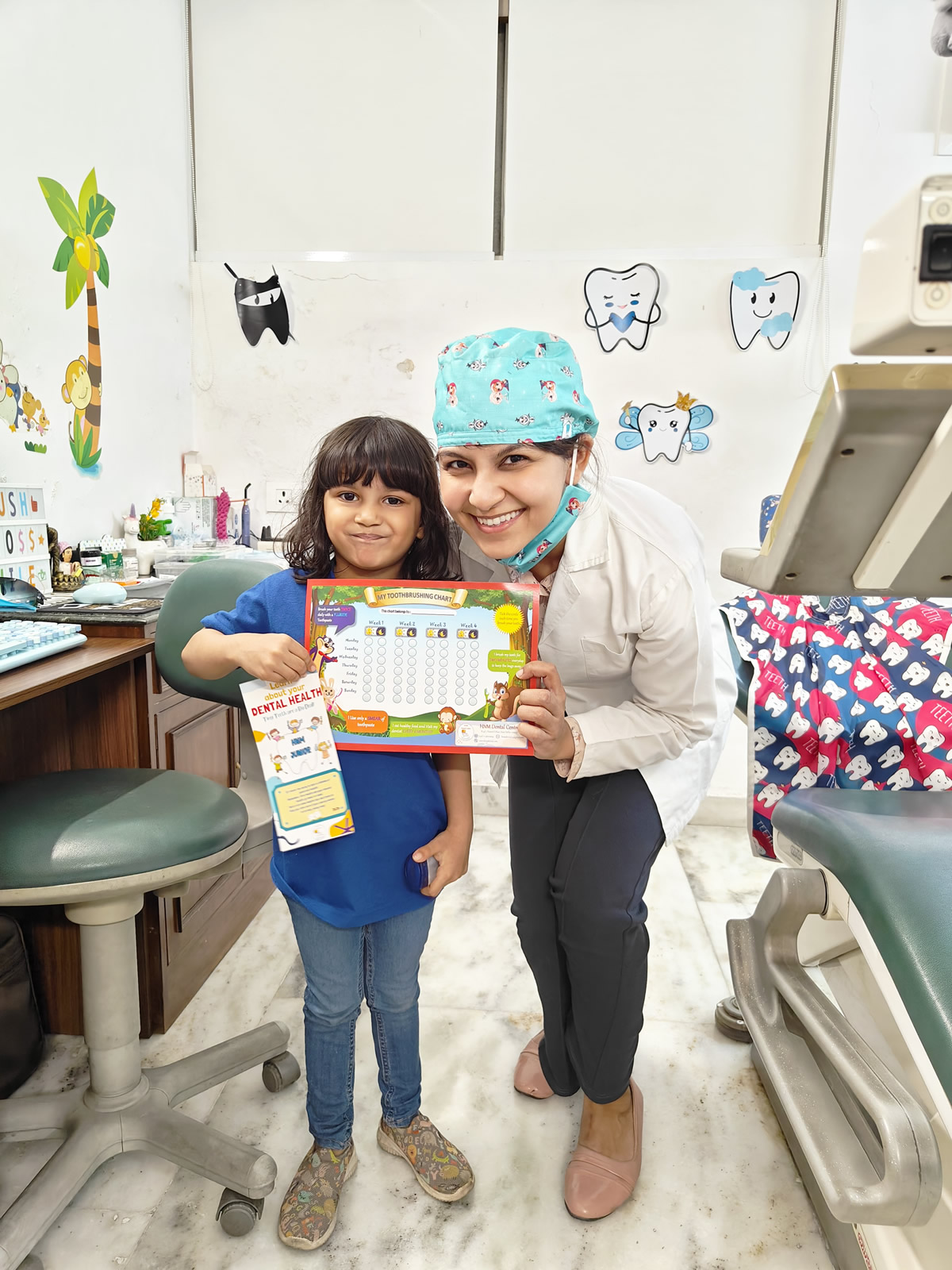How Sugar Affects Your Child’s Teeth – A Pediatric Dentist Explains

How Sugar Affects Your Child’s Teeth – A Pediatric Dentist Explains
“Too many sweets will rot your teeth.”
You’ve said it, your parents said it, and your child has probably rolled their eyes at it. But what actually happens when kids eat sugar? And why does it matter even if they just eat a little—frequently?
Let’s break this down in a way that makes sense, without guilt, and with clear steps you can take today to protect your child’s smile.
What Sugar Really Does to Your Child’s Teeth
Sugar doesn’t directly “attack” the teeth—but it feeds the bacteria in your child’s mouth. These bacteria break down sugar and produce acid as a by-product.
- That acid is the real villain.
It wears down the enamel—the outer layer of teeth—and if this keeps happening, cavities begin to form. And it’s not just chocolate and candy. Sugar hides in:
Packaged juices and flavoured milk
Cookies, biscuits, and energy bars
Breakfast cereals
Dried fruits like raisins
Even ketchup and some yoghurts
So even “healthy looking” snacks can put your child’s teeth at risk.
The pH Roller Coaster: What Happens Every Time Your Child Eats
Here’s something most parents don’t know:
Every time your child eats—especially sugary or starchy food—the pH level in their mouth drops. This means the environment turns acidic.
When pH drops below 5.5, enamel starts to lose minerals.
Now, saliva is the hero here. It gradually brings the pH back to normal—but this takes about 30 to 60 minutes.
Now imagine your child is:
-Sipping juice through the morning after breakfast,
-Munching on biscuits in the car,
-Having something sweet an hour after lunch,
-Snacking again before dinner
Their mouth never gets a break. The pH never recovers. Their teeth stay under acid attack all day long—a constant up-and-down that we call the pH roller coaster.
And this is one of the biggest causes of tooth decay in children.
5 Things You Can Do (That Actually Work)
Let’s be realistic—kids will eat sugar. You don’t have to go sugar-free. But managing how and when they consume it makes all the difference.
Here’s what helps:
1. Limit the Frequency of Sugary Snacks
It’s not just the quantity—it’s how often. The more often they eat, the more often their teeth face acid attacks.
2. Stick to Treats at Mealtimes
If your child wants something sweet, offer it with lunch or dinner—not in between. The extra saliva at mealtime helps neutralize acid faster.
3. Avoid Sticky Snacks
Things like toffee, raisins, or caramel cling to teeth and sit there longer. Bacteria love that.
4. Encourage Rinsing or Brushing
If brushing after every snack isn’t possible, even rinsing with plain water can help wash away leftover sugars and reduce acid.
5. Use the Right Toothpaste
A 1000ppm fluoride toothpaste ( rice-grain sized for 0-3yrs or a pea-sized amount for children above 3 years) helps re-mineralise enamel and fight early decay.
Dr. Manasi Shimpi, an expert Pediatric Dentist says –
“You don’t need to eliminate sugar from your child’s life. But understanding how it affects their teeth—and how mouth pH works—gives you real power as a parent.
Small changes like spacing out snacks, encouraging water rinsing, and scheduling regular checkups can go a long way.”
If you have questions or want to get your child’s teeth checked, we’d be happy to see you at HNM Dental Centre, Vasant Vihar. We specialise in pediatric dentistry, preventive care, and making dental visits fun and stress-free—for both kids and parents.
